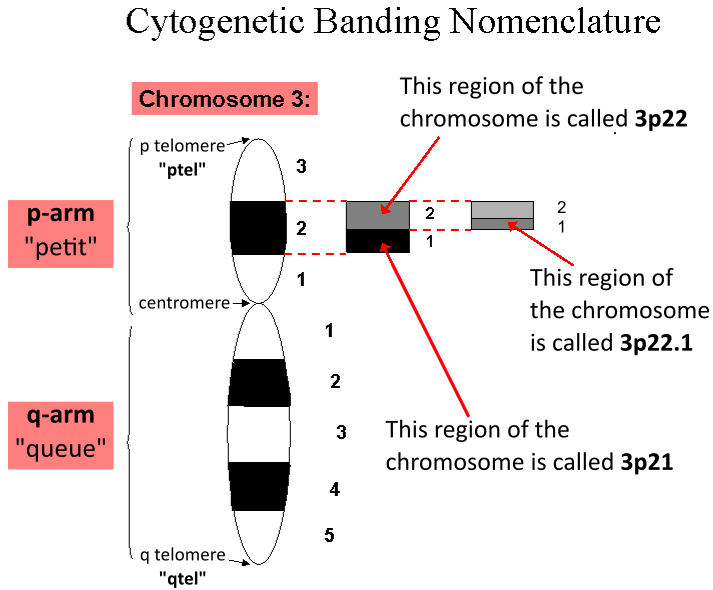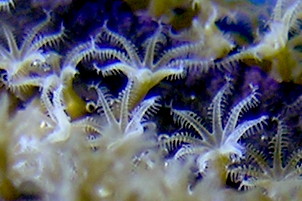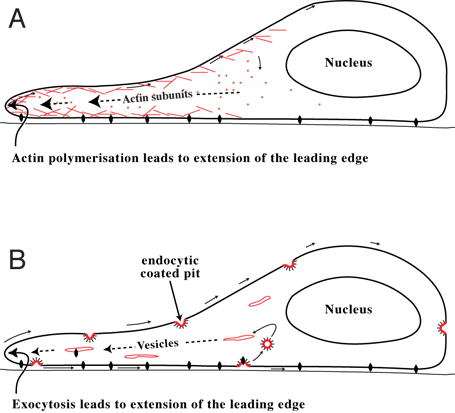|
Hydractinia Symbiolongicarpus
''Hydractinia symbiolongicarpus'' is one of the 30 + '' Hydractinia'' species known worldwide. This saltwater animal, from here on referred to as ''Hydractinia'', is at the base of the Cnidaria phylum and in many ways, is similar to the freshwater '' Hydra''. In the wild, ''Hydractinia'' feed on smaller invertebrates found in the shallow mud, however in laboratory environments they are fed brine shrimp. ''Hydractinia symbiolongicurpus'' and its sibling species, ''Hydractinia echinata'', are the two species from the genus ''Hydractinia'' on which most work has been published. Description ''Hydractinia'' consist of a network of gastrovascular canals embedded in a plate of tissue called the mat. When gastrovascular canals extend outside of the mat, they are called stolons. The stolon tips on the outer edge of the colony secrete SIF (Stolon Inducing Factor) allowing for the creation of branching stolons In the field, colonies exhibit morphologies that range from highly stoloni ... [...More Info...] [...Related Items...] OR: [Wikipedia] [Google] [Baidu] |
Hydractinia
''Hydractinia'' is a genus of commensal athecate hydroids which belong to the family Hydractiniidae. ''Hydractinia'' species mostly live on hermit-crabbed marine gastropod shells. One species, ''Hydractinia echinata'', is commonly known as snail fur. Another species, ''H. minoi'', is known to be commensal with stingfishes of the genus ''Minous''. Species References ''Hydractinia''at World Register of Marine Species The World Register of Marine Species (WoRMS) is a taxonomic database that aims to provide an authoritative and comprehensive list of names of marine organisms. Content The content of the registry is edited and maintained by scientific speciali ... Hydractiniidae Hydrozoan genera {{anthoathecata-stub ... [...More Info...] [...Related Items...] OR: [Wikipedia] [Google] [Baidu] |
Larvae
A larva (; plural larvae ) is a distinct juvenile form many animals undergo before metamorphosis into adults. Animals with indirect development such as insects, amphibians, or cnidarians typically have a larval phase of their life cycle. The larva's appearance is generally very different from the adult form (''e.g.'' caterpillars and butterflies) including different unique structures and organs that do not occur in the adult form. Their diet may also be considerably different. Larvae are frequently adapted to different environments than adults. For example, some larvae such as tadpoles live almost exclusively in aquatic environments, but can live outside water as adult frogs. By living in a distinct environment, larvae may be given shelter from predators and reduce competition for resources with the adult population. Animals in the larval stage will consume food to fuel their transition into the adult form. In some organisms like polychaetes and barnacles, adults are ... [...More Info...] [...Related Items...] OR: [Wikipedia] [Google] [Baidu] |
Hydractiniidae
Hydractiniidae is a cnidarian family of athecate hydroids. Genera The World Register of Marine Species The World Register of Marine Species (WoRMS) is a taxonomic database that aims to provide an authoritative and comprehensive list of names of marine organisms. Content The content of the registry is edited and maintained by scientific speciali ... includes the following genera in the family: *'' Bouillonactinia'' Miglietta, McNally & Cunningham, 2010 *'' Clava'' Gmelin, 1788 *'' Clavactinia'' Thornely, 1904 *'' Cnidostoma'' Vanhöffen, 1911 *'' Distichozoon'' Cairns, 2015 *'' Fiordlandia'' Schuchert, 1996 *'' Hydractinia'' Van Beneden, 1844 *'' Hydrissa'' Stechow, 1922 *'' Hydrocorella'' Stechow, 1921 *'' Janaria'' Stechow, 1921 *'' Parahydractinia'' Xu & Huang, 2006 *'' Podocoryna'' M. Sars, 1846 *'' Schuchertinia'' Miglietta, McNally & Cunningham, 2010 *'' Stylactis'' Allman, 1864 References Filifera Cnidarian families {{Anthoathecata-stub ... [...More Info...] [...Related Items...] OR: [Wikipedia] [Google] [Baidu] |
Hermit Crab
Hermit crabs are anomuran decapod crustaceans of the superfamily Paguroidea that have adapted to occupy empty scavenged mollusc shells to protect their fragile exoskeletons. There are over 800 species of hermit crab, most of which possess an asymmetric abdomen concealed by a snug-fitting shell. Hermit crabs' soft (non- calcified) abdominal exoskeleton means they must occupy shelter produced by other organisms or risk being defenseless. The strong association between hermit crabs and their shelters has significantly influenced their biology. Almost 800 species carry mobile shelters (most often calcified snail shells); this protective mobility contributes to the diversity and multitude of crustaceans found in almost all marine environments. In most species, development involves metamorphosis from symmetric, free-swimming larvae to morphologically asymmetric, benthic-dwelling, shell-seeking crabs. Such physiological and behavioral extremes facilitate a transition to a sheltered ... [...More Info...] [...Related Items...] OR: [Wikipedia] [Google] [Baidu] |
Hydractinia Interactions
''Hydractinia'' is a genus of commensal athecate hydroids which belong to the family Hydractiniidae. ''Hydractinia'' species mostly live on hermit-crabbed marine gastropod shells. One species, ''Hydractinia echinata'', is commonly known as snail fur. Another species, ''H. minoi'', is known to be commensal with stingfishes of the genus ''Minous''. Species References ''Hydractinia''at World Register of Marine Species The World Register of Marine Species (WoRMS) is a taxonomic database that aims to provide an authoritative and comprehensive list of names of marine organisms. Content The content of the registry is edited and maintained by scientific speciali ... Hydractiniidae Hydrozoan genera {{anthoathecata-stub ... [...More Info...] [...Related Items...] OR: [Wikipedia] [Google] [Baidu] |
Allele
An allele (, ; ; modern formation from Greek ἄλλος ''állos'', "other") is a variation of the same sequence of nucleotides at the same place on a long DNA molecule, as described in leading textbooks on genetics and evolution. ::"The chromosomal or genomic location of a gene or any other genetic element is called a locus (plural: loci) and alternative DNA sequences at a locus are called alleles." The simplest alleles are single nucleotide polymorphisms (SNP). but they can also be insertions and deletions of up to several thousand base pairs. Popular definitions of 'allele' typically refer only to different alleles within genes. For example, the ABO blood grouping is controlled by the ABO gene, which has six common alleles (variants). In population genetics, nearly every living human's phenotype for the ABO gene is some combination of just these six alleles. Most alleles observed result in little or no change in the function of the gene product it codes for. However, ... [...More Info...] [...Related Items...] OR: [Wikipedia] [Google] [Baidu] |
Locus (genetics)
In genetics, a locus (plural loci) is a specific, fixed position on a chromosome where a particular gene or genetic marker is located. Each chromosome carries many genes, with each gene occupying a different position or locus; in humans, the total number of protein-coding genes in a complete haploid set of 23 chromosomes is estimated at 19,000–20,000. Genes may possess multiple variants known as alleles, and an allele may also be said to reside at a particular locus. Diploid and polyploid cells whose chromosomes have the same allele at a given locus are called homozygous with respect to that locus, while those that have different alleles at a given locus are called heterozygous. The ordered list of loci known for a particular genome is called a gene map. Gene mapping is the process of determining the specific locus or loci responsible for producing a particular phenotype or biological trait. Association mapping, also known as "linkage disequilibrium mapping", is a method ... [...More Info...] [...Related Items...] OR: [Wikipedia] [Google] [Baidu] |
Allorecognition
Allorecognition is the ability of an individual organism to distinguish its own tissues from those of another. It manifests itself in the recognition of antigens expressed on the surface of cells of non-self origin. Allorecognition has been described in nearly all multicellular phyla. This article focuses on allorecognition from the standpoint of its significance in the evolution of multicellular organisms. For other articles which focus on its importance in medicine, molecular biology, and so forth, the following topics are recommended as well as those in the Categories links at the bottom of this page. * Immune system, Immunology * Transplant rejection * Tissue typing * Major histocompatibility complex (MHC) The ability to discriminate between self and non-self is a fundamental requirement for life. At the most basic level, even single-celled organisms need to be able to distinguish between food and non-food, to respond appropriately to invading pathogens, and to avoid cannibal ... [...More Info...] [...Related Items...] OR: [Wikipedia] [Google] [Baidu] |
Polyp (zoology)
A polyp in zoology Zoology ()The pronunciation of zoology as is usually regarded as nonstandard, though it is not uncommon. is the branch of biology that studies the animal kingdom, including the structure, embryology, evolution, classification, habits, and ... is one of two forms found in the phylum Cnidaria, the other being the medusa (biology), medusa. Polyps are roughly cylindrical in shape and elongated at the axis of the vase-shaped body. In solitary polyps, the aboral (opposite to oral) end is attached to the substrate (biology), substrate by means of a disc-like holdfast (biology), holdfast called a pedal disc, while in colony (biology), colonies of polyps it is connected to other polyps, either directly or indirectly. The oral end contains the mouth, and is surrounded by a circlet of tentacles. Classes In the class (biology), class Anthozoa, comprising the sea anemones and corals, the individual is always a polyp; in the class Hydrozoa, however, the indi ... [...More Info...] [...Related Items...] OR: [Wikipedia] [Google] [Baidu] |
Cell Migration
Cell migration is a central process in the development and maintenance of multicellular organisms. Tissue formation during embryonic development, wound healing and immune responses all require the orchestrated movement of cells in particular directions to specific locations. Cells often migrate in response to specific external signals, including chemical signals and mechanical signals. Errors during this process have serious consequences, including intellectual disability, vascular disease, tumor formation and metastasis. An understanding of the mechanism by which cells migrate may lead to the development of novel therapeutic strategies for controlling, for example, invasive tumour cells. Due to the highly viscous environment (low Reynolds number), cells need to continuously produce forces in order to move. Cells achieve active movement by very different mechanisms. Many less complex prokaryotic organisms (and sperm cells) use flagella or cilia to propel themselves. Eukaryo ... [...More Info...] [...Related Items...] OR: [Wikipedia] [Google] [Baidu] |
Cellular Differentiation
Cellular differentiation is the process in which a stem cell alters from one type to a differentiated one. Usually, the cell changes to a more specialized type. Differentiation happens multiple times during the development of a multicellular organism as it changes from a simple zygote to a complex system of tissues and cell types. Differentiation continues in adulthood as adult stem cells divide and create fully differentiated daughter cells during tissue repair and during normal cell turnover. Some differentiation occurs in response to antigen exposure. Differentiation dramatically changes a cell's size, shape, membrane potential, metabolic activity, and responsiveness to signals. These changes are largely due to highly controlled modifications in gene expression and are the study of epigenetics. With a few exceptions, cellular differentiation almost never involves a change in the DNA sequence itself. Although metabolic composition does get altered quite dramatically ... [...More Info...] [...Related Items...] OR: [Wikipedia] [Google] [Baidu] |
Cell Growth
Cell growth refers to an increase in the total mass of a cell, including both cytoplasmic, nuclear and organelle volume. Cell growth occurs when the overall rate of cellular biosynthesis (production of biomolecules or anabolism) is greater than the overall rate of cellular degradation (the destruction of biomolecules via the proteasome, lysosome or autophagy, or catabolism). Cell growth is not to be confused with cell division or the cell cycle, which are distinct processes that can occur alongside cell growth during the process of cell proliferation, where a cell, known as the mother cell, grows and divides to produce two daughter cells. Importantly, cell growth and cell division can also occur independently of one another. During early embryonic development ( cleavage of the zygote to form a morula and blastoderm), cell divisions occur repeatedly without cell growth. Conversely, some cells can grow without cell division or without any progression of the cell cycl ... [...More Info...] [...Related Items...] OR: [Wikipedia] [Google] [Baidu] |





